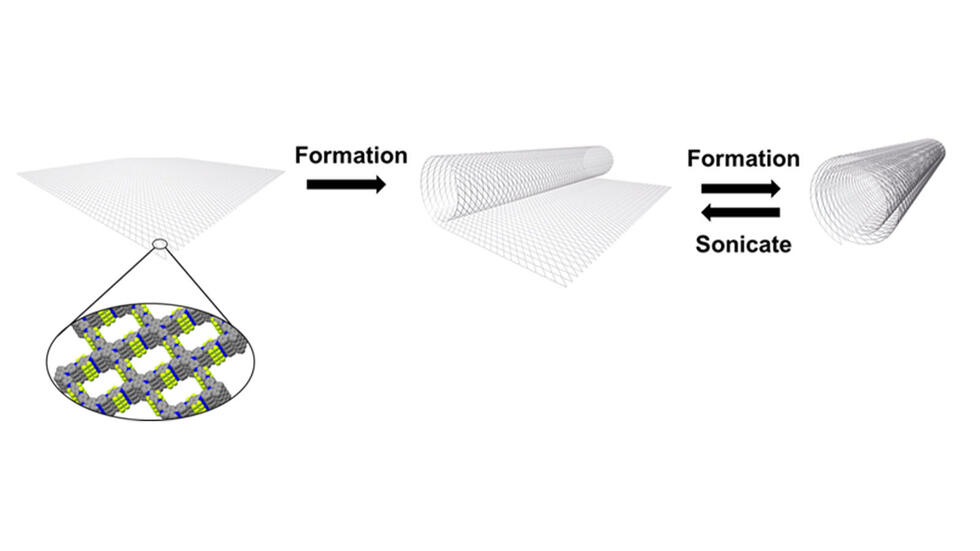2025-04-17 名古屋大学

<関連情報>
- https://www.nagoya-u.ac.jp/researchinfo/result/2025/04/-cof-1.html
- https://www.nagoya-u.ac.jp/researchinfo/result/upload_images/20250417_engg.pdf
- https://www.pnas.org/doi/10.1073/pnas.2424314122
2次元COFシートを巻き上げて1次元電子伝導性・プロトン伝導性ナノチューブ構造へ Rolling two-dimensional covalent organic framework (COF) sheets into one-dimensional electronic and proton-conductive nanotubes
Zhuowei Li, Rajendra Prasad Paitandi, Yusuke Tsutsui, +17 , and Shu Seki
Proceedings of National Academy of Science Published:April 16, 2025
DOI:https://doi.org/10.1073/pnas.2424314122
Significance
Tunable/designable topology and porous network make π-conjugated COFs a counterpart of graphenes and have been expected as a new class of organic optoelectronic materials. Electron transport in these materials is the critical parameter to optimize the above properties/functionalities. Nanoscale morphology of π-conjugated COFs one of the critical parameters that governs the electrical conductivity, like interconvertible carbon allotropes of 2D graphene and 1D carbon nanotubes (CNTs), that exhibits distinct electronic properties. Similarly, transforming 2D π-conjugated COF sheets into 1D structures is demonstrated herein, allowing us to control the “flow” of electrons and protons. 1D tubular conjugated COFs are thus an ace to place conjugated COFs on the level challenging to graphenes in their electronic properties.
Abstract
Mimicking the interconvertible carbon allotropes of 2-dimensional (2D) graphene and 1-dimensional (1D) carbon nanotubes (CNTs), herein we report the in situ transformation of 2D π-conjugated covalent organic frameworks (COFs) sheet into 1D nanotubular structures via self-assembly the sheets at solvent interfaces. The facile “roll-sheets” self-assembly resulted in coaxial nanotubes with uniform cross-sectional diameter, which was realized for diazapyrene-based COFs but not for the corresponding pyrene COF, although both possess similar chemical structures. Upon replacing the carbon atoms at 2,7-positions of pyrene with nitrogen, contrasting optical and electronic properties were realized, reflecting the rolled structure of the conjugated 2D sheets. The nanotubes exhibited concerted electronic- and proton-conducting nature with stable conducting pathways at ambient conditions. The nitrogen centers act simultaneously as the site for charge carrier doping and proton acceptors, as evidenced by the high photo- and electrical conductivity, as well as the record proton conductivity (σ = 1.98 S cm−1) results. The present diazapyrene-based 1D nanotubular COF serves as a unique materials platform with electronic conduction in the wall and proton conduction in the core, respectively.



